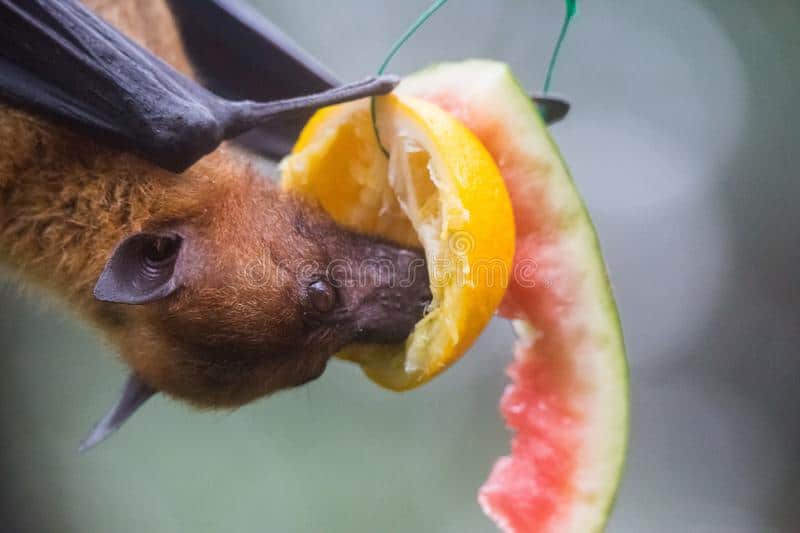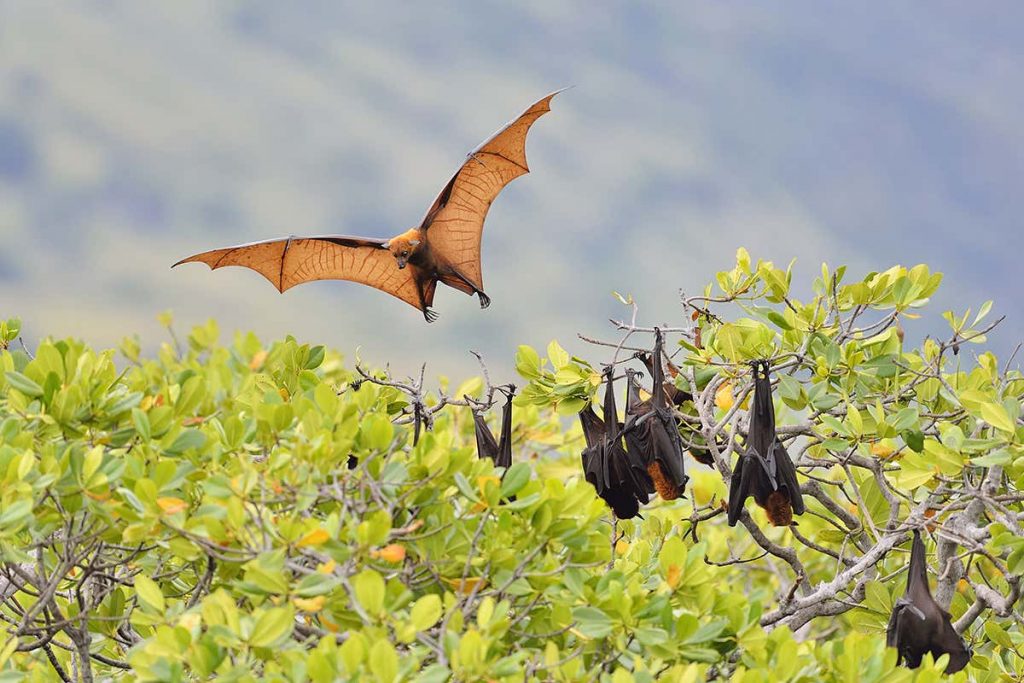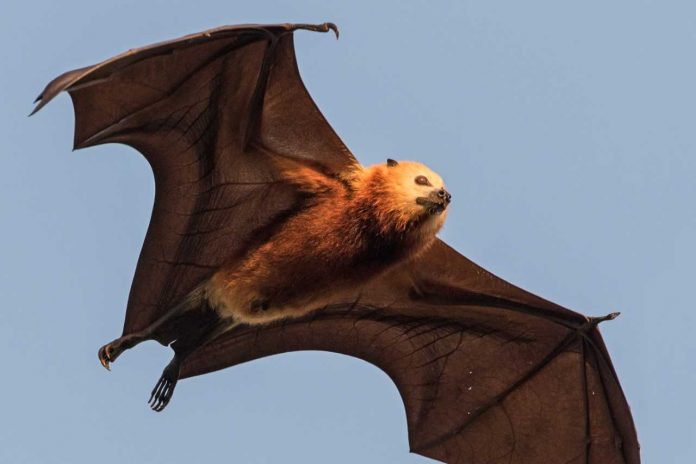Despite its name, the flying fox is not related to the fox. Flying foxes may have fox-like facial features, including pointed ears and furry necks, but they are actually fruit bats belonging to the genus Pteropus. There are approximately 60 species of flying foxes in existence throughout the world, and they are the largest of the Old World fruit bats (of which there are about 160 species altogether).
What do Flying Foxes Eat?

Rather than using echolocation (locating an object’s position by emitting a sound and measuring the direction and time taken by the echo to return from the object) used by insect-eating bats, flying foxes rely on their excellent sight and highly developed sense of smell to navigate their way around.
Flying foxes feed at night, and are vegetarian. Upon awakening at sunset, the fruit bats are capable of flying long distances to find food. When a food source is located, the bat hangs upside down from a tree branch, and reaches for ripe fruits using its foot, or the thumb located on its wing. Fruits of choice for flying foxes include bananas, figs, pawpaw, guava, apples, pears, plums and berries.
Flying foxes also feed on flower nectar and pollen. This, together with the fact they drop fruit seeds as they fly, means that fruit bats have an important role to play in plant pollination and seed dispersal. Fruit bats contribute significantly to tropical rain forest reforestation and to the maintenance of the ecosystems in which they live.
Where do Flying Foxes Live?

Flying foxes are native to the tropical forests of Australia, the Malay-Indonesian Archipegalo islands, the Philippines, some islands in the South Pacific, southern Asia, Mauritius, the Seychelles, Madagascar, and the island of Pemba. They roost together during the day in ‘camps’ which consist of hundreds or thousands of individuals. When resting, flying foxes hang upside down with their wings wrapped around their bodies, in trees overhanging mangroves or swamps.
Flying foxes are hunted for sport, food and medicinal purposes, leading to dwindling numbers of these fruit bats in some parts of the world. For example, the large flying fox in Malaysia is listed as ‘near threatened’ by the International Union for Conservation of Nature (IUCN), and in the view of some scientists, is in danger of being hunted to extinction. Habitat destruction also poses a threat to the survival of flying foxes.
The large flying fox, or Pteropus vampyrus, is the largest bat species in the world, and the world’s largest flying mammal. It can weigh as much as 1.5 kilograms, has a wingspan of up to 1.5 metres, and a body of approximately 1 foot long.


















